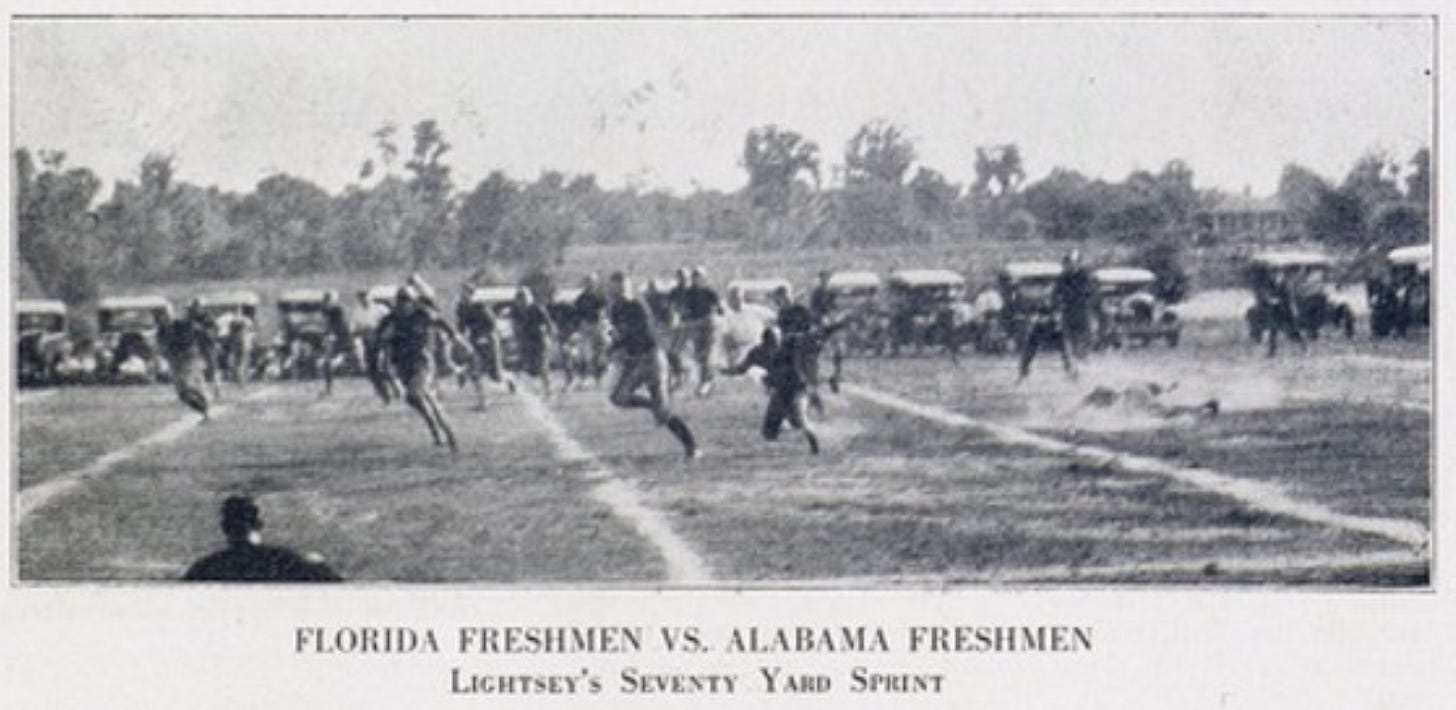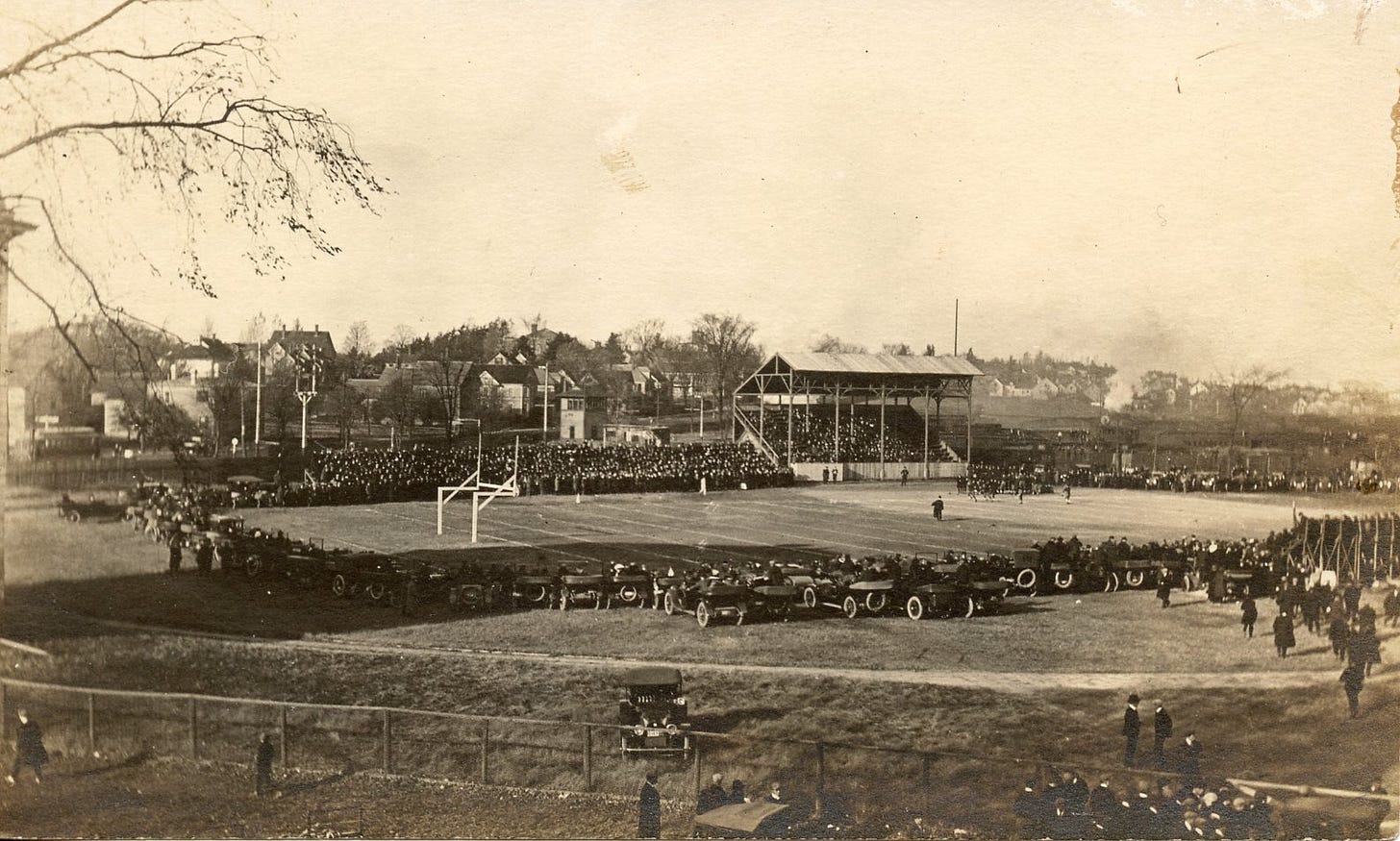Today's Tidbit... Carriages and Cars Along The Sideline
Last year I wrote about the days when cars lined the sidelines at football fields until stadiums grew larger, eventually encircling the fields. Initially, football fields did not have stands, or the stands were only on one side, so fans stood on the other sideline and at the end of the fields. Well-controlled locations kept fans behind ropes or in their cars, with the local constables enforcing those rules. Of course, before fans watched games from automobiles, they did so from within or atop carriages.
Having the fans in carriages and cars served a few purposes for the stadium proprietors. First, the vehicles brought in additional revenues since stadiums often charged per vehicle and each passenger. As early as 1891, the Yale-Princeton Thanksgiving Day game at Manhattan Field, they charged $10 per carriage and $1 per passenger. Stadiums outside New York City could not command those fees, but those in vehicles typically paid premium prices relative to their norms.

When VMI visited Georgia Tech in 1914, each passenger paid the $1.00 general admission price per person and vehicle. On the other hand, the Baker-Ottawa Thanksgiving Day game in 1917 charged 75 cents admission plus a 10-cent war tax, $1.00 for automobiles on the sideline (regardless of the number sitting in the car), and $0.50 for vehicles behind end zones.
Second, the vehicles assisted with crowd control. In stadiums with sufficient seating, passengers often had to remain in their cars, and others could not stand or walk along the sidelines. During the same period, coaches and players were restricted from standing on the sideline. In addition, the ball remained live when it went out of bounds, so keeping fans off the sideline was a priority before more formal stadiums came along.
As a columnist noted before a 1915 Chattanooga high school game in which there were hard feelings due to a recent clash over player eligibility:
On account of the situation, the officials have requested an unusual number of policemen, and side-line rules will be strictly enforced, everyone being ordered into the stand except those actually seated in automobiles. An effort should be made and doubtless will be made to prevent the crowd from the automobiles from walking up and down the side-lines, a "bush league" proceeding at once unnecessary and even dangerous, trouble in games where the players and fans are "wrought up" coming from the side-lines nine times out of ten.
'High Teams In Hot Game,' Chattanooga Daily Times, November 19, 1915.
Likewise, prospective attendees at a 1908 game between Tacoma high schools rivals received the warning:
Strict field rules will be enforced today and the field and sidelines kept free from spectators. Coach Perkins advises the rooters who still have lingering hope to getting on the sidelines that have had better find a good seat in the grandstand or bleachers because they will not be allowed on the field. Sideline badges have been issued to those entitled to them and only these will have the sideline privilege.
'Old Rivals Meet Today In Big Football Game,' Tacoma Daily Ledger, November 7, 1908.
The third reason for keeping fans from lining the sidelines was that they interfered with the sight lines of those who paid the price to sit in the stands. As an article touting two semi-pro games in Buffalo in 1918 noted:
Special parking of automobiles along sidelines opposite grandstands permitted at both parks. ...Clear view for all spectators assured as no person except players, substitutes and officials will be allowed on sidelines or outside grandstands, bleachers or auto parking zones."
'Semi-Pro Football Tomorrow,' Buffalo Enquirer, October 26, 1918.
The stadium building boom of the 1920s initiated the demise of carriages and cars along the sidelines, at least for big games. Parking along the sideline or outside the fence remains part of small-town football and some colleges that play at lower levels. Sometimes a luxury box and a box truck are the same, depending on the day of the week.
Football Archaeology is reader-supported. Click here to buy one of my books or otherwise support the site.





